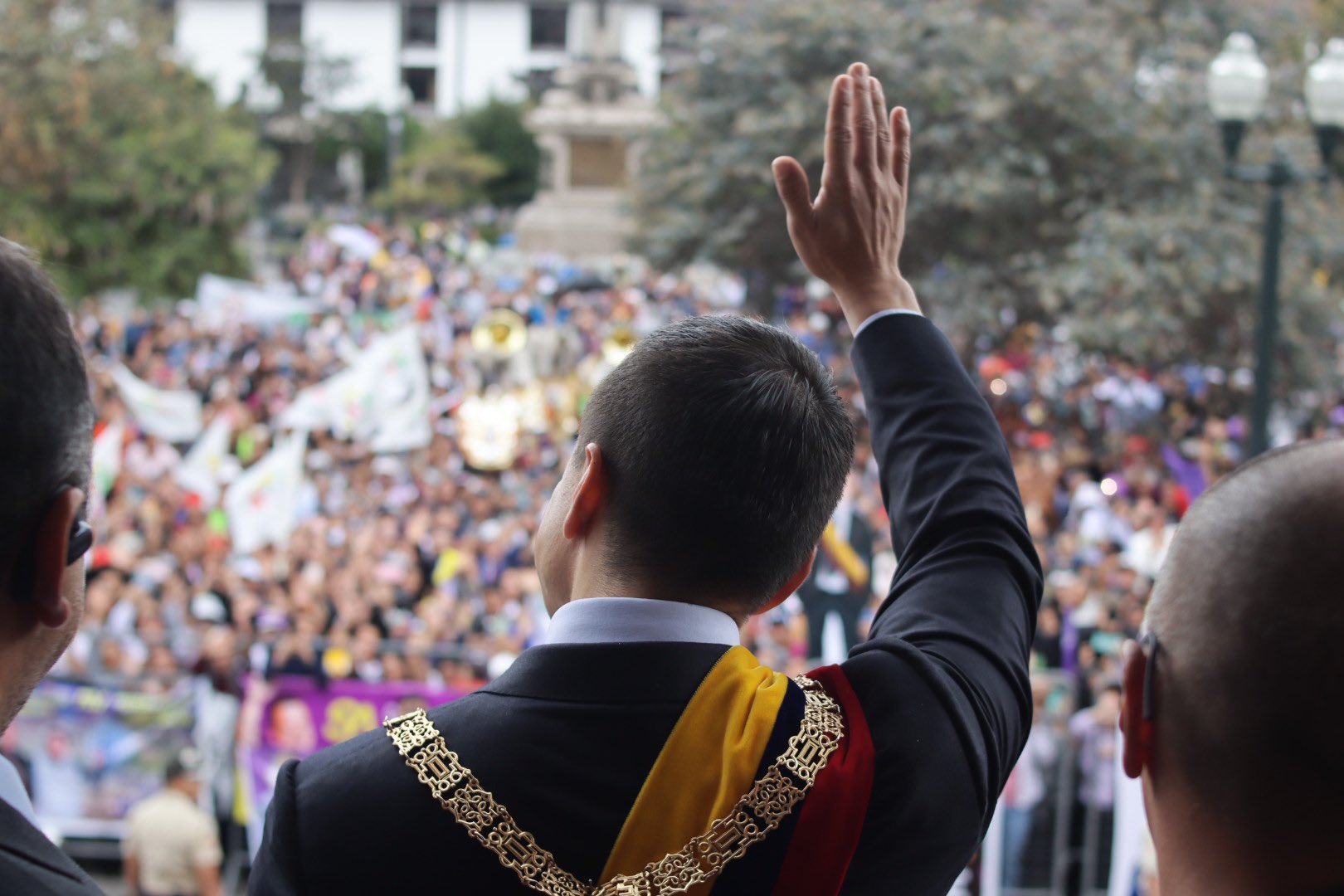Noboa leads the race amid instability and violence

On February 9, Ecuador will hold general elections to define the presidency, vice-presidency and 151 seats in the National Assembly for the 2025-2029 period. The race is expected to be polarized between the current president, Daniel Noboa, who seeks reelection with the support of Acción Democrática Nacional (ADN), and Luisa González, candidate of Revolución Ciudadana (RC), a movement led by former president Rafael Correa.
The electoral landscape is marked by high volatility and uncertainty. Despite maintaining a solid base of support, Noboa faces the challenge of sustaining his campaign’s momentum following a slight decline in voting intentions in January. This raises doubts about his ability to secure a first-round victory—requiring either more than 40% of the vote with a 10-point lead over the runner-up or exceeding 50% regardless of the margin. His challenge is not only to consolidate his backing but also to prevent vote fragmentation toward emerging candidates and curb the rise of null or blank votes, which reflect public discontent.
Meanwhile, Luisa González remains the main opposition contender but struggles to expand her electoral base beyond the core supporters of correísmo. Her difficulty in consistently attracting undecided voters and capitalizing on dissatisfaction with the government—particularly on critical issues such as security and energy—could limit her chances of winning.
Ecuador’s presidential elections will determine the country’s political and economic future amid a multidimensional crisis. If Daniel Noboa is re-elected, his administration will continue to grapple with issues such as insecurity, unemployment, the energy crisis, and corruption, while also working to consolidate support in a fragmented Assembly. In contrast, a victory for Luisa González would mark the return of correísmo, emphasizing state intervention, security and justice reforms, and increased investment in social policies.
Regardless of the outcome, the next government will face a fragmented legislature and the challenge of building consensus in a polarized environment to achieve political and economic stability.
Legislative Elections
The next National Assembly will reflect a new political composition following its expansion from 137 to 151 seats. In this context, the ruling party, ADN, could increase its current 27-seat bloc. However, securing an absolute majority (77 seats) remains unlikely, forcing the government to forge alliances to advance its legislative agenda. Meanwhile, RC, which currently holds 48 seats, risks losing representation and solidifying its position as the second-largest political force. To maintain its influence, it may seek strategic agreements, potentially with the Partido Social Cristiano.

The next National Assembly will reflect a new political composition following its expansion from 137 to 151 seats. In this context, the ruling party, ADN, could increase its current 27-seat bloc. However, securing an absolute majority (77 seats) remains unlikely, forcing the government to forge alliances to advance its legislative agenda. Meanwhile, RC, which currently holds 48 seats, risks losing representation and solidifying its position as the second-largest political force. To maintain its influence, it may seek strategic agreements, potentially with the Partido Social Cristiano.
